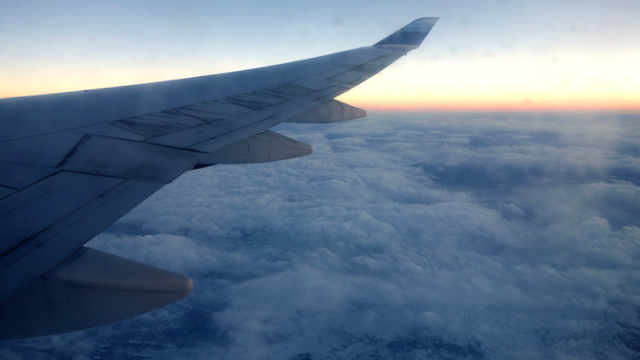If there is someone who knows how to make a plane ride more comfortable, it’s the pilot. That plane is their office, and they know all its secrets. Here are some tips from a professional flyer on how to make the skies a little more friendly – for you.
Image: Flickr/Jason Rowe
Metro.uk spoke with Jonny Knowlson, who has become rather famous on social media as Jonny the Pilot. He blogs about travelling, of course, and flies for a commercial airline. Though he’s based in the United Kingdom, flying through the air in a metal tube is pretty much the same over every country. Knowlson shared his suggestions for where to book a seat to prioritise sleep, space, and a lack of bone-rattling turbulence. You pick what’s important.
Sit By The Wings
Large aircrafts fly at a high altitude. If you sit closer to the centre, over the plane’s wings, you will be less affected by the aircraft’s struggle against the elements, according to Knowlson:
Being closer to the centre of the plane’s mass while forces such as lift, torque, wind, gravity, drag and thrust act upon it will mean you’ll be well placed for a smooth ride.
He doesn’t address what you should do if you see a sinister monster clinging to the engine out your window, but I suggest you notify a flight attendant.
There Are Multiple Strategies For Sleep
Knowlson basically says that for quiet, you want to avoid the engines. That means a front row seat is best – but also likely First Class. Hey, these are tips for comfort, not economy! But if that isn’t an option, Knowlson suggests, surprisingly, you grab a seat in the aisle, but far away from the can:
The best spot for sleeping is probably towards the middle of your cabin away from the noise of toilets and my hard-working colleagues in the galley.
For The Long Legs
Though you won’t be able to store your items in front of you, the seats by the bulkhead, with its dividing walls or curtains, are supposedly best for stretching out. Knowlson also recommended checking your flight on a site he uses called Seat Guru, which will supposedly let you know where the hot spots are on your plane. You can also check which seats have “limited recline” if that’s important for you:
I recently flew to Geneva on an Airbus A319. According to Seat Guru row 10, seats B, C, D and E are great as they have “extra legroom due to the emergency exit”.
Very specifically, Knowlson says that if you’re on a Boeing 787 Dreamliner plane, all of row 30 has legroom, though it’s close to the bathroom. Good to know.
When You Want To Make A Quick Escape
Well, you probably guessed that being close to the front is the best way to get the heck off a plane fast. Usually, a plane’s exit on the lefthand side from the front, though Knowlson mentions back exits. I have personally never experienced that, but I’m also not a pilot. However, with Knowlson’s help I’ve realised I can have a few of the things I want on a plane – just probably not all of them at once.

Comments
One response to “How To Pick The Most Comfortable, Spacious Seats On An Aeroplane”
” they have “extra legroom due to the emergency exit”. ” I still see these seats populated by people too frail/unfit to act in event of emergency.